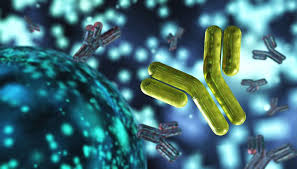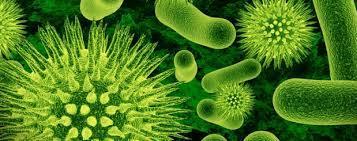COURSE OBJECTIVES:
|
UNIT |
OBJECTIVES |
|
I |
Inorganic Chemistry: This course is to study about chemistry of interhalogens and structure, properties of oxyacids of P-block elements. Also to learn about magnetic, catalytic properties & stabilities of transition elements and their complexes. |
|
II |
Organic Chemistry: The course is designed to emphasise on Nucleophilic substitution reactions of halogens and addition, reduction reactions of Carbonyl compounds. |
|
III |
Physical Chemistry: This course is designed to enunciate Kholrausch’s law, Onsagar’s equation, Nernst equation and its applications. |
|
IV |
General Chemistry: The course is designed to emphasise on standard solutions, indicators, Theory of redox titrations, Theory of complexometric titrations and chirality, symmetry of molecules. To learn colligative properties like osmosis. COURSE OUTCOMES: Students will be able to CO1: Distinuishbetween SN1 and S N2mechanism in coordination compounds. CO2: Discuss importance of different elements in biological systems. CO3: DifferentiateGlucose Fructose and arabinose. CO4: Identify peaks and able to estimate number of equivalent protons in different groups. CO5: Calculate change in kinetics, potential, Enthalpy and internal energy. CO6: Analyse change in chemical reactions using first law of Thermodynamics. CO7: To use the mass spectrum of compound to find the molecular mass which inturn help to identity the structure.of the compound |
- Teacher: T NAVYA KUMARI
Objective of Course :
- To gain an understanding of the Fundamentals of Nutrition through an examination of the identity, acquisition, and utilization of the nutrients and the science of nutrition their action, interaction, and balance in relation to health and disease.
- This course describes the molecular and cellular basis of the development and function of the immune system in states of health and disease. The course will provide the required framework for more advanced courses in Immunology
Learning Outcomes:
On completion of the course student will be able to
CO1. Utilize knowledge from the physical and biological sciences as a basis for
understanding the role of food and nutrients in health and disease processes.
CO2. Identify and explain nutrients in foods and the specific functions in
maintaining health.
CO3. Apply technical skills, knowledge of health behavior, clinical judgment,
and decision-making skills when assessing and evaluating the nutritional
status of individuals and communities and their response to nutrition
intervention.
CO4. Describe the basic mechanisms, distinctions and functional interplay of
innate and adaptive immunity and define the cellular/molecular pathways of
humoral/cell-mediated adaptive responses
CO5. Define the basic mechanisms that regulate immune responses and maintain
tolerance.
CO6. Explain the cellular and molecular aspects of lymphocyte activation,
homeostasis, differentiation, and memory.

- Teacher: Dr. PRATHYUSHA YAMARTHI
| OBJECTIVE OF THE COURSE: | |||||
| The objective of the course is to provide students with an overview of the concepts and fundamentals of data communication and computer networks. To familiarize with the basic programming concepts. | |||||
| COURSE OUTCOMES: | |||||
| By the end of the course, the student will
be able to: CO 1: To get familiarize with various networking concepts. CO 2: To master the various steps in writing a program. CO 3: To acquire knowledge on database and querying it using SQL. CO 4: Gain knowledge about various emerging technologies. CO 5: Identify the components of DBMS and get a clear idea about the three schema architecture. CO 6: Gain knowledge about various emerging technologies. |
- Teacher: APARNA VIJAYAN
COURSE OBJECTIVES & COURSE OUTCOMES:
Students will be able to
CO1: To explain principle of drug action on receptors.
CO2: Have knowledge on different types of diseases.
CO3: Discuss on different disorders of vitamins and micronutrients.
CO4: Have knowledge about the drugs that treat different metabolic disorders.
CO5: Relate physicho chemical properties of chemicals to the impact that have on ADME.
CO6: Interpret and explain significant mechanism of regulation of enzymatic action.
- Teacher: T NAVYA KUMARI
Objective of Course:
The course will cover the concept of microbial growth, metabolism and applications of microbial technology in varied fields. The theory course structure will be complimented by practical sessions. This course will provide a strong understanding of applied microbiology and will help the students to explore work opportunities in Biotechnology Companies and Industries as well.
Course Outcomes:
On completion of the course the student will be able
to:
CO1- Illustrate basic techniques in microbiology and microbial physiology.
CO2- Portray the production methods for industrially important products of microbial origin such as antibiotics, vaccines, proteins, primary and secondary metabolites, as well as food and dairy products.
CO3-Get acquainted with the industrial aspect of the field of Microbiology, and also learn about growth pattern of microbes in different industrial systems.
CO4- Develop an understanding of process control, upstream and downstream process.
CO5-Understand and explain the science underlying the conversion of raw materials to final products.
CO6- Clarify application of micro organisms in varied fields of environmental microbiology like bioremediation, bioenergy, biopesticides, biofertilizers and waste water treatment.

- Teacher: VARALAKSHMI V
Environmental
Biotechnology deals with the basics about environment and different kinds of
pollutions and pollutants affecting the environment. The remedy for pollution
is being addressed using the implication of Biotechnology tools which would
help the environment from these pollutants. It explains the bioenergy –
renewable and non-renewable sourced of energy which acts as the alternative
source of energy with their further classification as biofuels and their
availability. With increasing pollutants in the environment, the concept of
bioremediation using microbiology and restoration of environment using plant
and microbial sources are increasing with the usage of biotechnology tools.
Course Outcomes
CO 1: Students will be able to understand about the basics of environmental pollutions, different pollutants and their sources.
CO 2: It will help them to understand about effect of pollutions with climate change and global warming.
CO 3: Students will be able to understand the implication of biotechnology tools to address the problems by pollution.
CO 4: They learn about the renewable and non-renewable sources of energy and understand various biofuel sources.
CO 5: They would understand about the application of biotechnology in bioremediation methods using microbes and plant sources
CO 6: Students will be able to describe the concepts and application of various phytoremediation, bioremediation and other methods for restoration of environment.

- Teacher: Dr. SRINATH NAGANATHAN
Objective of Course:
This course is an introduction to microbiology that provides a strong grounding in fundamental aspects of the basic biology of bacteria and to familiarize the student with emerging field of biotechnology i.e. Recombinant DNA Technology as well as to create understanding and expertise in wet lab techniques in genetic engineering.
Course Outcomes:
On completion of the course the student will be able to:
CO1- Master aseptic techniques and be able to perform routine culture handling tasks safely and effectively.
CO2- Know the various Physical and Chemical growth requirements of bacteria and get equipped with various methods of bacterial growth measurement.
CO3- Learn the essential concepts of virology which include the structure of different viruses, properties, replication, types of infection, how viruses cause disease, immune response to infection
CO4- Explain briefly how the PCR mechanism works
CO5- Discuss the practical aspects of applying recombinant DNA technology.
CO6- Explain the significance of model organisms in recombinant DNA technology.

- Teacher: VARALAKSHMI V